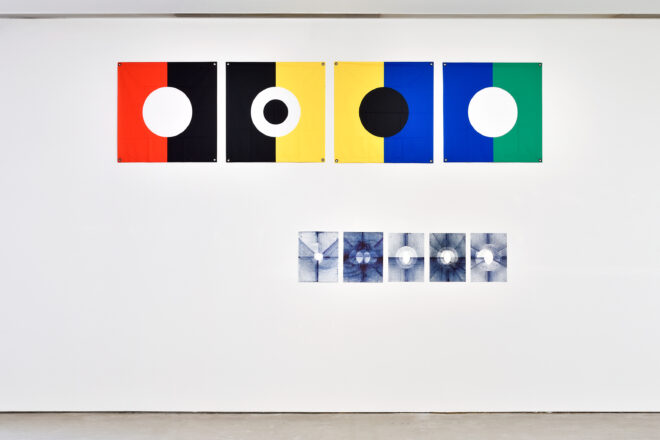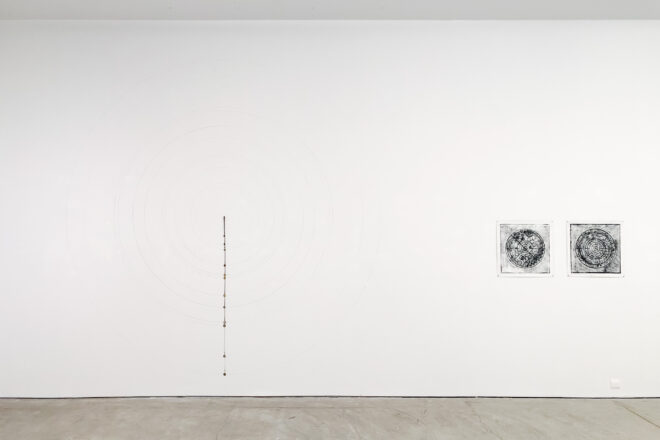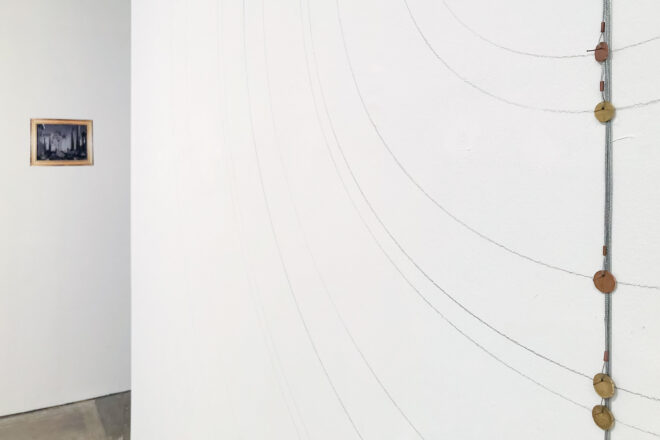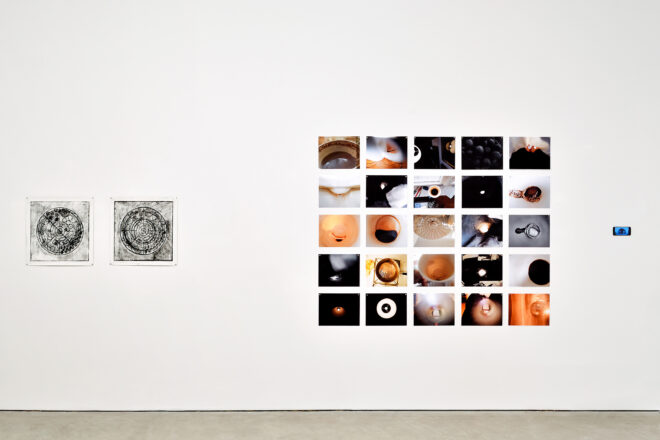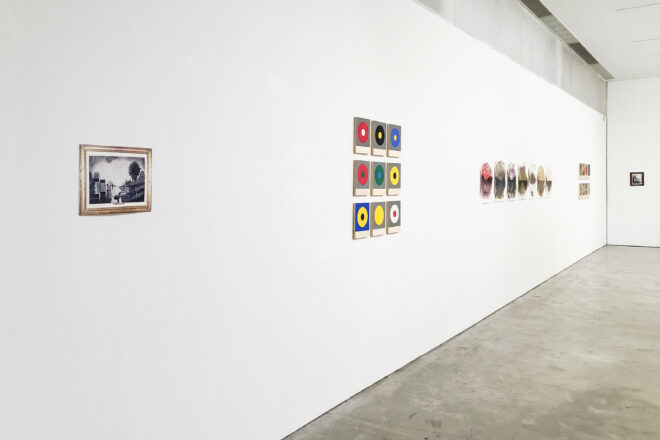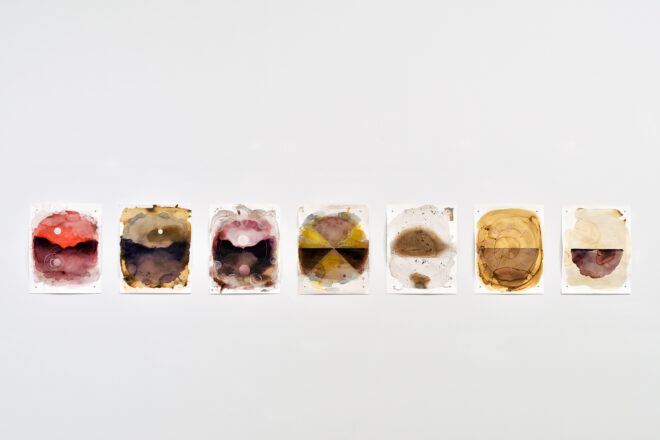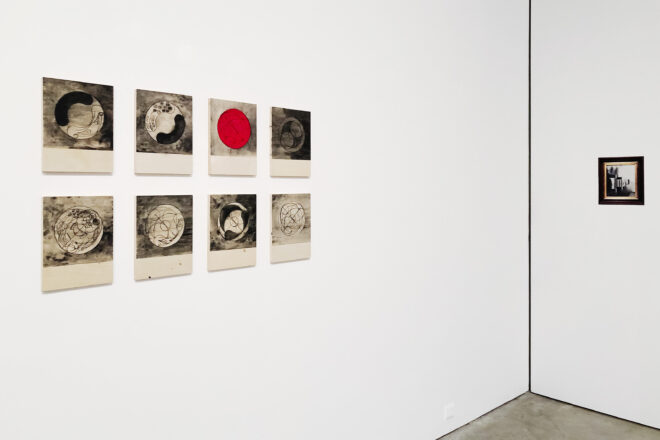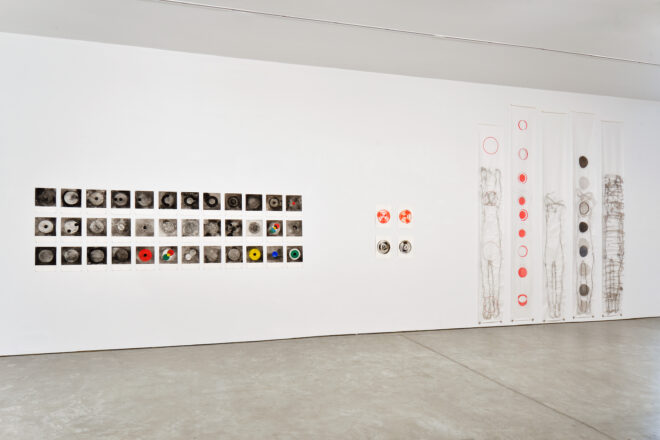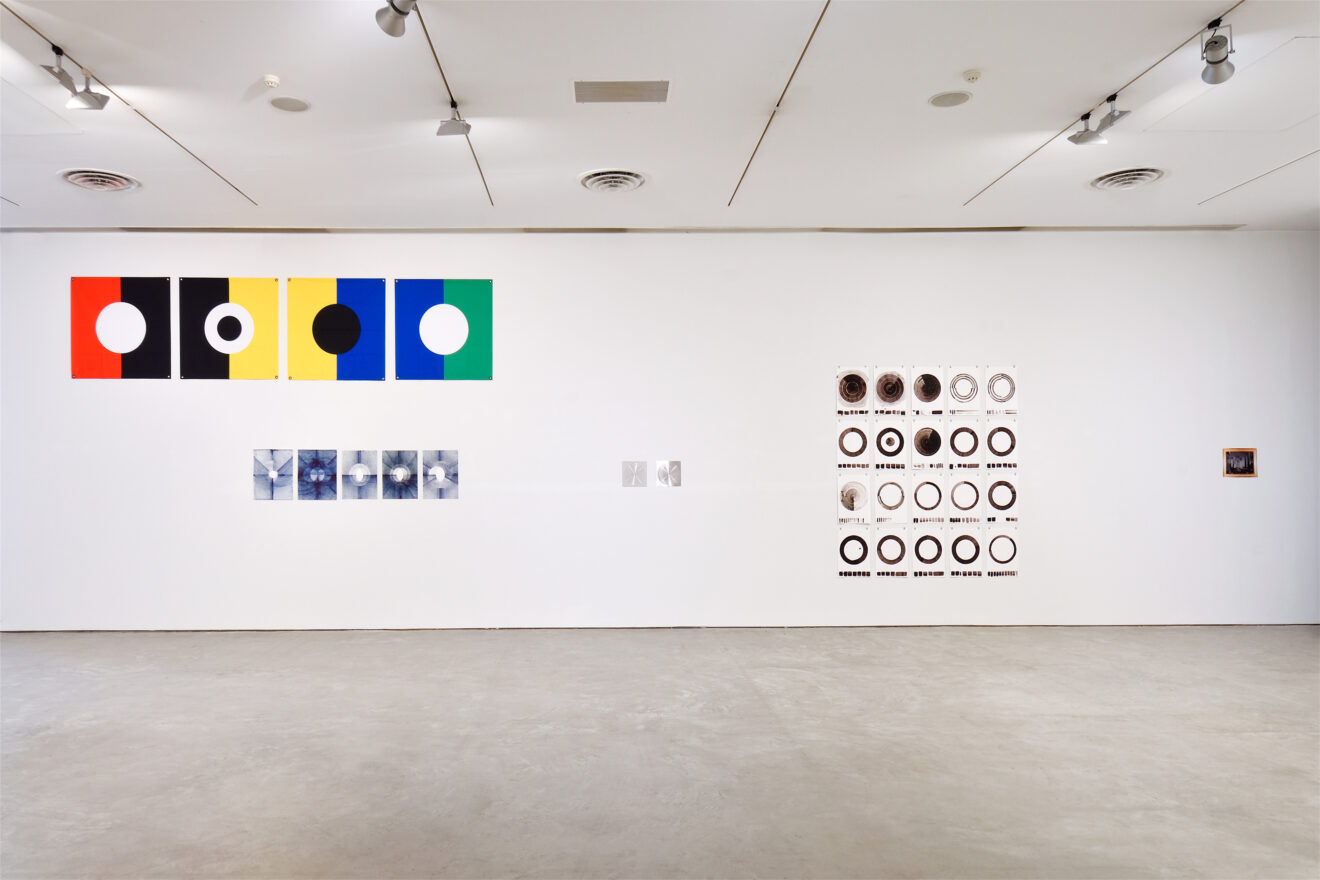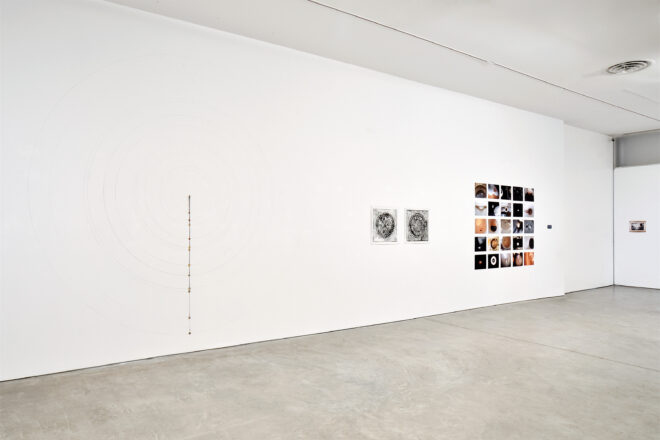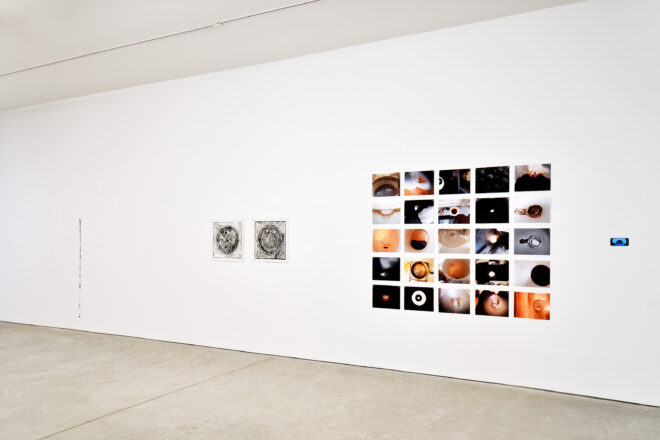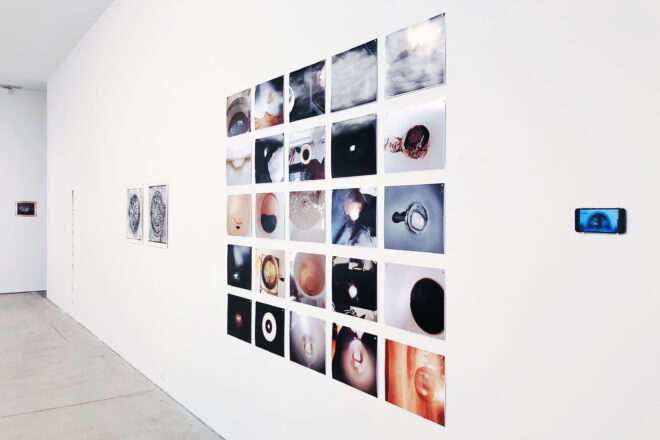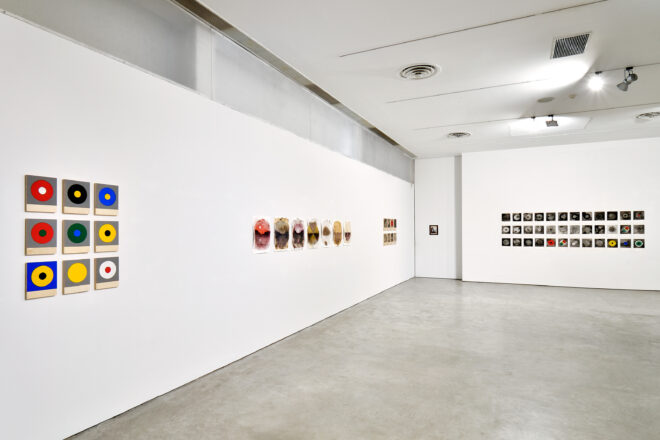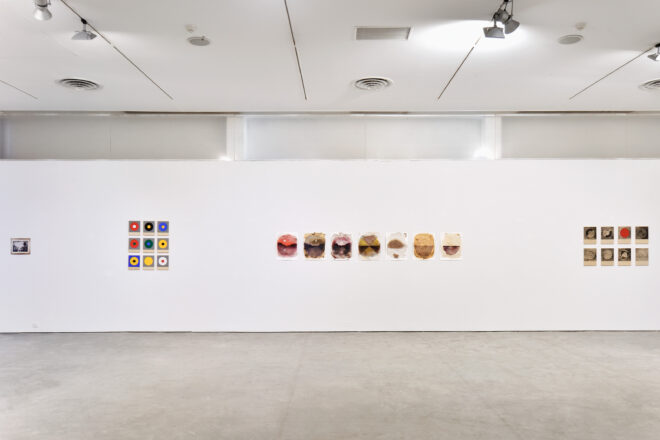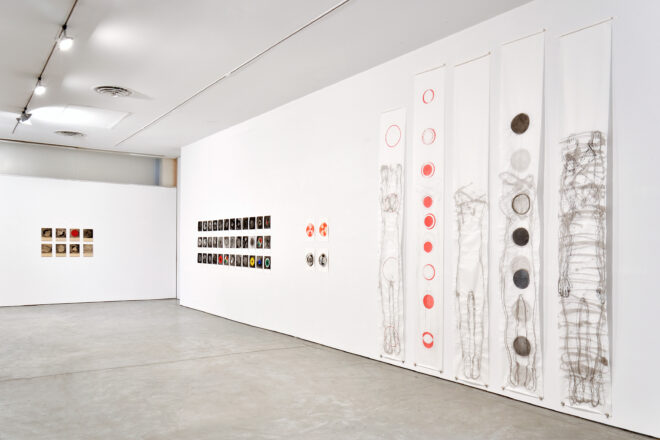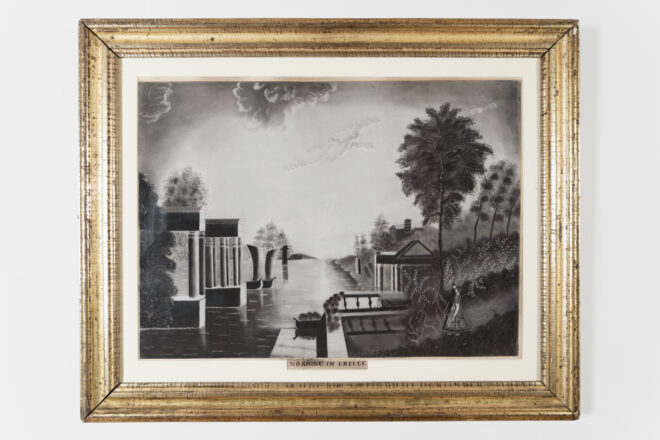On Tuesday June 10th, from 19:00 to 22:00, Ileana Tounta Contemporary Art Center presents the group exhibition by Matt Mullican and Sophie Tottie, with a contribution by the art historian Valerie Smith.
The exhibition will be on view until July 31st 2025.
Based on recurrent travels to Greece since the 1980s Tottie invited Mullican to collaborate on an exhibition in Athens. The artists’ approach to materials, to various mediums, ways of installing their work and the associations it triggers, made for a good correspondence. Serendipitously, a connection to Greece surfaced in Smith’s interest in amateur American mid 19th century drawings on which she has been writing a book, to be published in 2026.
The core of the exhibition begins with a consideration of formal and conceptual affinities, such as the use of direct methods, the recurring circular form and its broad associations in Tottie’s Universal(s) and Mullican’s Cosmologies. The exhibition pivots on the material and abstract aspects of the artworks across disparate areas of the world.
A minimalist and conceptual approach (systematic, almost mechanic material method which spins around the making of meaning) resonates in Tottie’s artworks. Allusions to the scientific, social and historical are present in recurrent circular works such as Universals(s) (2017 – ongoing), The All (2016 – ongoing) and Sense (Universals(s)), (2020 – ongoing). The works are visualizations that touch on narratives from modern and historic times. For instance, her titles relate to narratives of such diverse subjects as the shoemaker/philosopher Jacob Böhme (1575-1624), or the cleaning industry’s use of the word universal, as in “universally” clean. There are also references to transactional trading systems and the circulation of coins or metals in the drawings like Face Value (2014), Single Fare (2016) and Key Work(s) (2024 – ongoing), where the ancient technique of metal point drawing is explored through direct mark making on the wall.
Mullican’s work can be broken down into five worlds. The first world is the subjective; it’s the place of meaning without form. The place of heaven and hell. The second world is the place of signs, signs can hold meaning. The third world is the world framed, the arts exist here, fiction exists here. The fourth world is the world unframed, the world we live in, the natural world, the world of the street! The fifth world is the material world, the place without meaning. The only common element in the five worlds is the circle! The circle is the sign of meaning, the sign of signs!! The world framed and unframed is a circle. The elements exist as an infinite number of circles.
Mullican and Tottie overlap in their use of forms and their implied historical meanings. Art historian and cultural theorist Aby Warburg developed a method for how we experience similar images from different parts of the world. “Warburg understood that thought has to do not with forms found but with transforming forms. It is a matter of perpetual ‘migrations’ (Wanderungen) as he liked to say. He understood that dissociations are liable to analyze, to re–edit, to reread the history of man.”1
Given this framework, sandpaper drawings created by American amateur artists and schoolgirls became interesting because they were done in a monochromatic technique then called “Grecian Painting,” from the near resemblance to the effect of several paintings discovered on the walls of ancient Grecian palaces.”2 Of course, this explanation is a lovely fiction. However, the democratic ideals symbolized in Greek architecture, mythological and historical scenes from Greece, e.g. Lord Byron dreaming at the Acropolis (a picture of the poet on his way to help defend the Greek War of Independence) were subjects young Americans aspired. Overall, sandpaper artists interpreted popular prints of the day and embellished them freely to achieve their conceptual vision.
Mullican’s and Tottie’s artworks connect indirectly to sandpaper drawings in their free associations with their sources. A generous expansive vision happens in this context, which generates new perspectives and ongoing ‘migrations’ of meaning. The freedom to move in between different fields and to interact with images in the world is the red thread through Circle to the All. The exhibition explores how hybrids of disparate and at times contradictory sources produce new knowledge.
